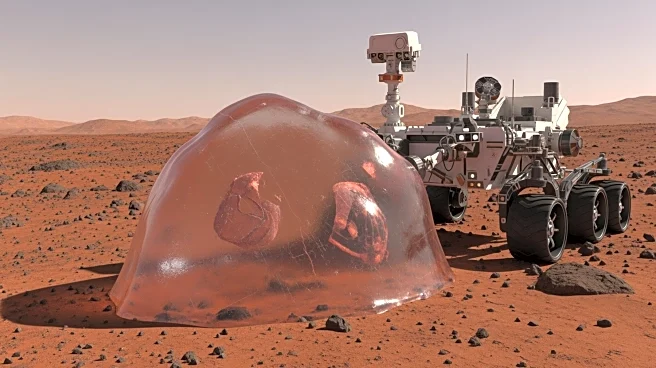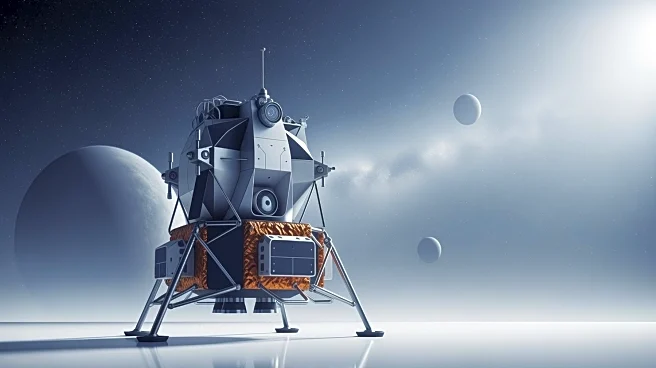What's Happening?
NASA's Perseverance rover, currently exploring the Martian surface, has captured a significant image using its SHERLOC WATSON camera. This image, taken on October 14, 2025, was selected as the 'Image of the Week' for the rover's mission week 244. SHERLOC,
which stands for Scanning Habitable Environments with Raman & Luminescence for Organics & Chemicals, is an advanced instrument designed to analyze the Martian surface for organic compounds and minerals. The technique it employs, Raman spectroscopy, allows scientists to identify different molecules based on their spectral 'fingerprints.' This capability is crucial for understanding the environmental conditions of Mars' past, particularly in identifying potential biosignatures that could indicate the presence of life.
Why It's Important?
The SHERLOC instrument's ability to detect organic molecules and minerals is vital for astrobiology, as it helps scientists assess whether Mars could have supported life in its ancient past. The presence of organics, especially if found in specific patterns or 'clumps,' could suggest microbial life once thrived on the planet. However, it's important to note that nonbiological processes can also produce organics, so their presence alone doesn't confirm past life. Nonetheless, these findings contribute significantly to our understanding of Mars' geological history and its potential habitability, offering insights that could guide future exploration and study of the planet.
What's Next?
As the Perseverance rover continues its mission, it will keep using SHERLOC and other instruments to gather more data on the Martian surface. The ongoing analysis will focus on identifying more organic compounds and understanding the environmental conditions that led to their formation. This research could pave the way for future missions aimed at returning samples to Earth for more detailed study. Additionally, the findings could influence the planning of human missions to Mars, as understanding the planet's past habitability is crucial for assessing its potential for future human exploration.
Beyond the Headlines
The use of Raman spectroscopy on Mars represents a significant technological advancement in planetary exploration. This technique, named after physicist C.V. Raman, allows for non-destructive analysis of materials, which is particularly useful in the harsh Martian environment. The insights gained from SHERLOC's findings could also have implications for understanding similar processes on Earth and other celestial bodies, potentially leading to broader applications in the field of astrobiology and planetary science.













